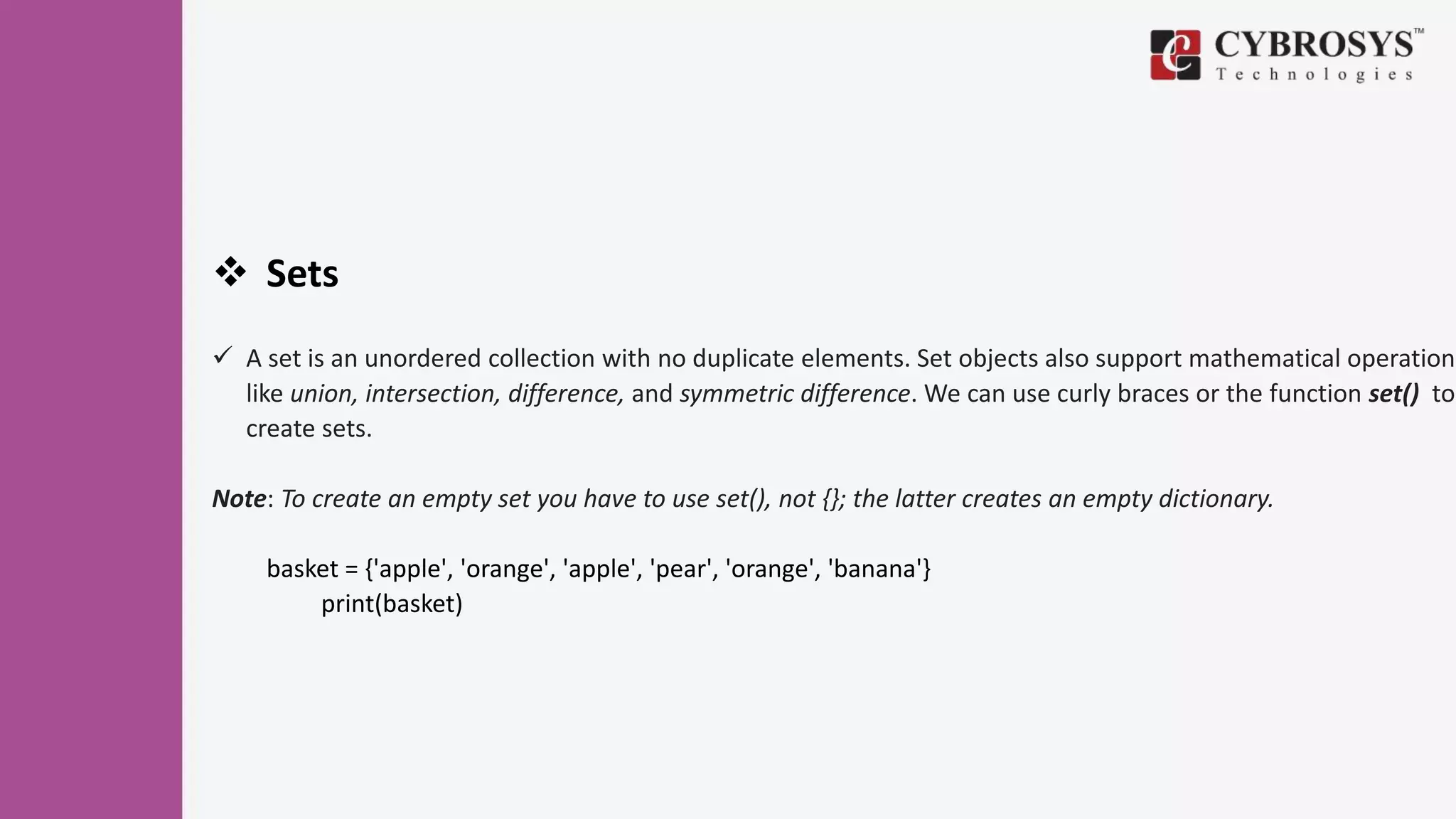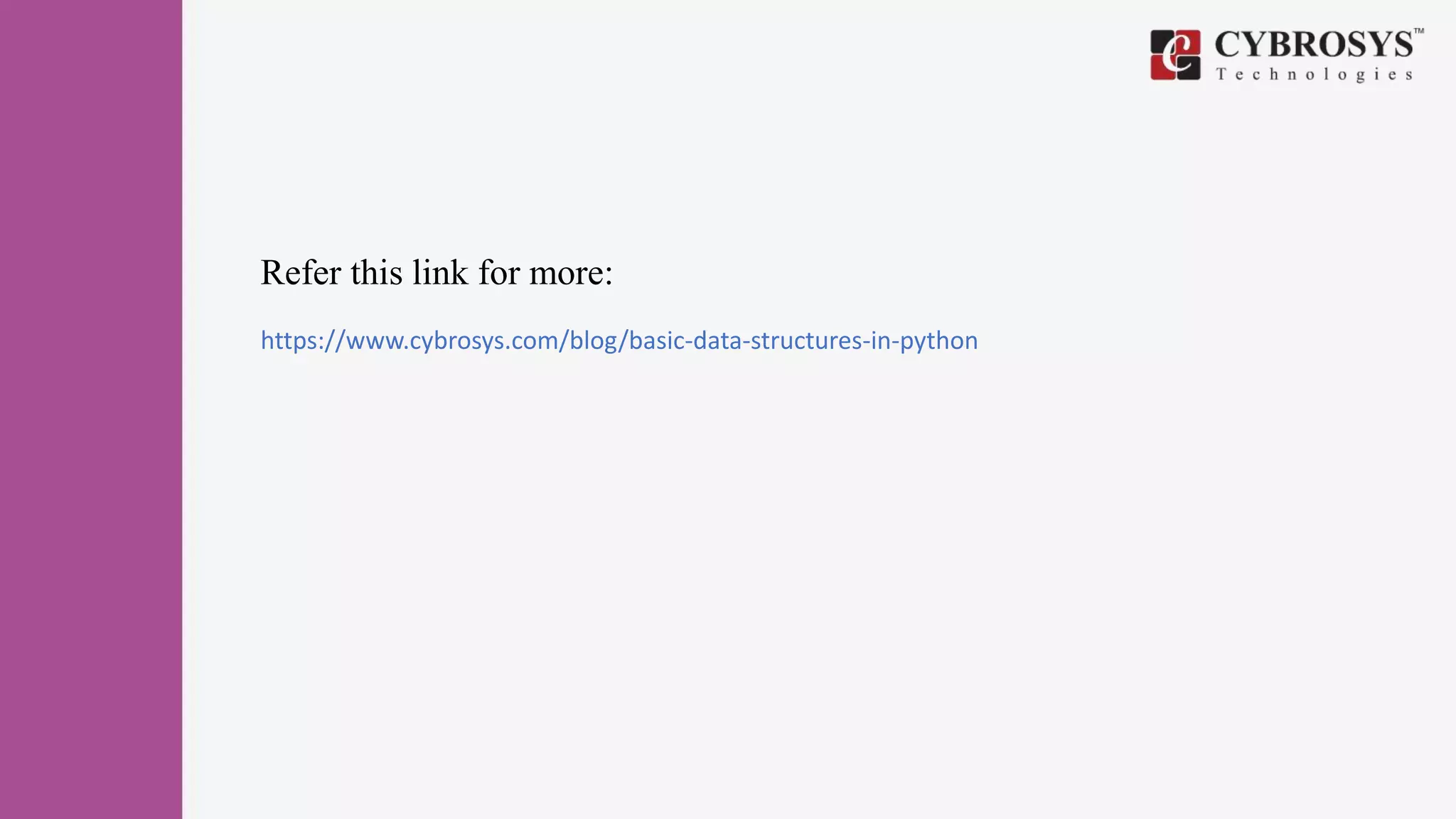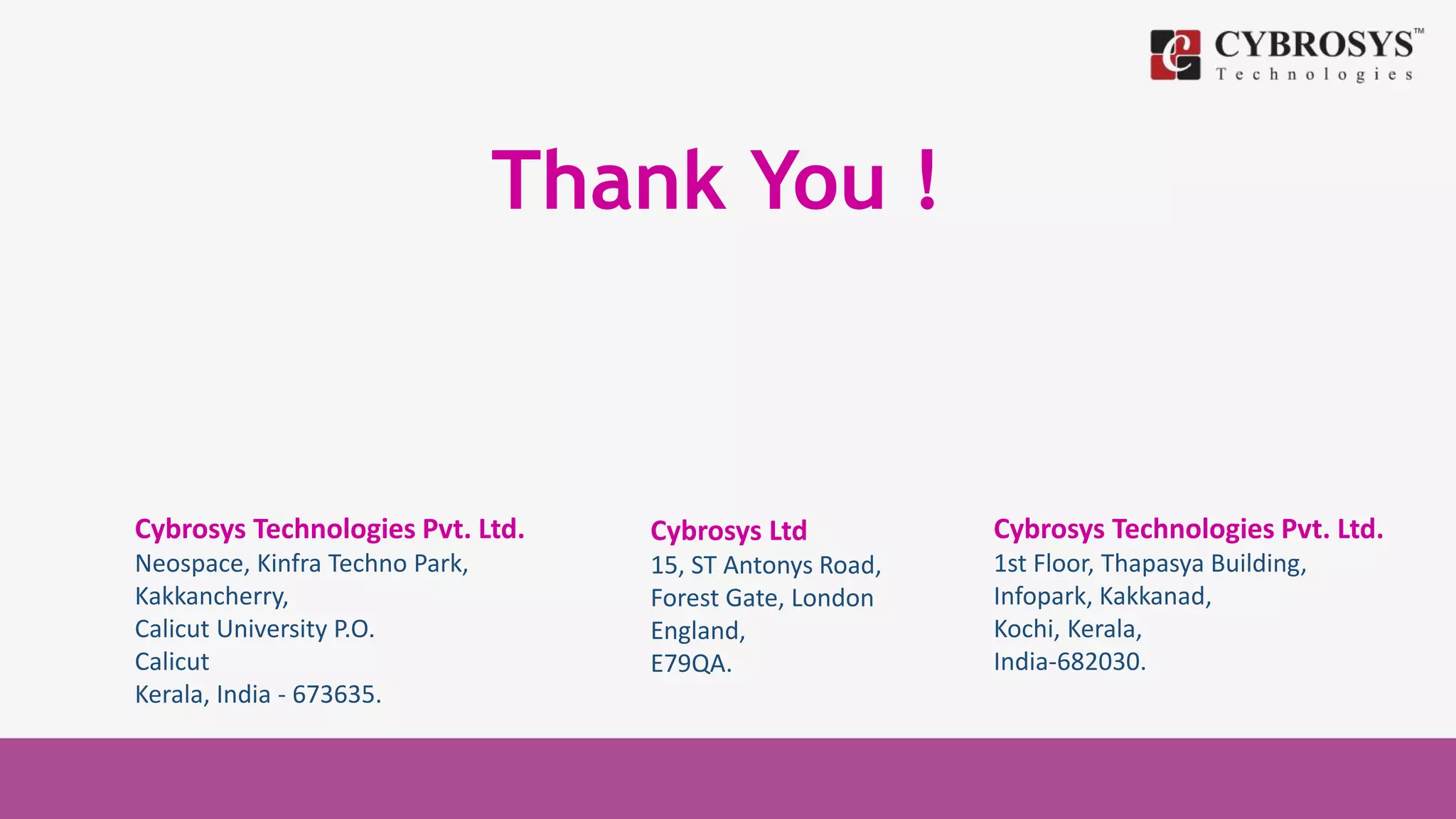This document provides an introduction to basic data structures in Python, including lists, dictionaries, tuples, strings, and sets. It explains how to create, access, and manipulate these data structures, detailing methods for updating and deleting elements. Python is highlighted as a versatile high-level programming language suitable for various applications such as web development and scientific computing.

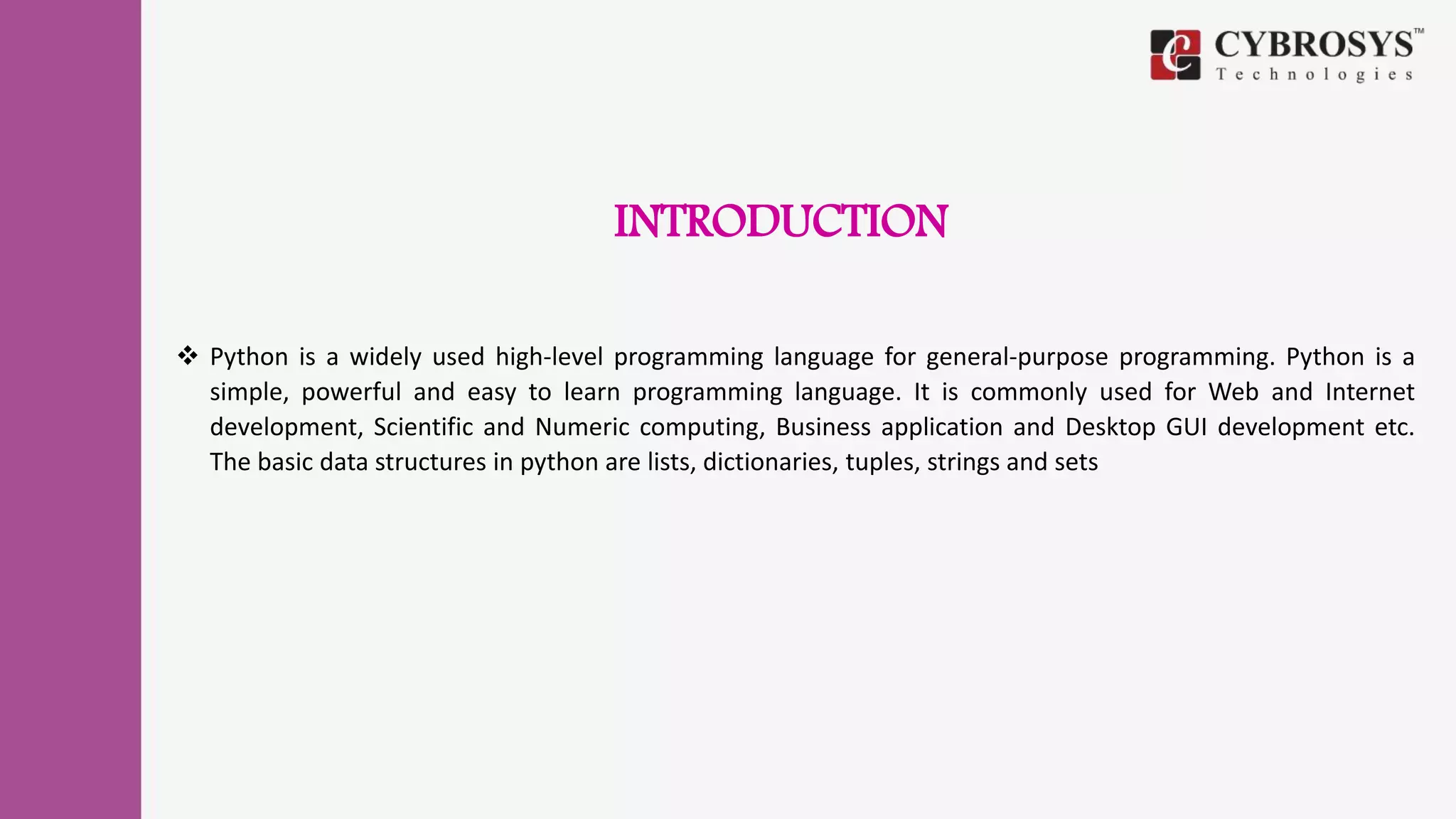

![List
A list is a collection of data which are separated by commas. The contents of a
list are enclosed by square brackets. It can contain elements of different
types.
Example:
sample_list = [‘sample’, ‘list’, 45, ‘test’]](https://image.slidesharecdn.com/basicdatastructuresinpython-171107114320/75/Basic-data-structures-in-python-4-2048.jpg)
![ Accessing list contents :-
Accessing an element of a list is simple. We can access each element in a
list using its index. The index starts from zero.
Example:
print sample_list[0] -
Output: sample
Print sample_list[1:3] -
Output : [‘list’, 45]](https://image.slidesharecdn.com/basicdatastructuresinpython-171107114320/75/Basic-data-structures-in-python-5-2048.jpg)
![ Updating list contents:
We can use the append() method or extend() method to add elements to a list. The
append() method adds an object to the end of a list and extend() method adds each
element of an iterable object to a list. To update an existing element in a list, assign the new
value to that position using its index. See the examples.
sample_list.append(1) :
Output : [‘sample’, ‘list’, 45, ‘test’, 1]
sample_list.append([1, 2]) :
Output : [‘sample’, ‘list’, 45, ‘test’, [1, 2]]
sample_list.extend([1,3,2]) :
Output : [‘sample’, ‘list’, 45, ‘test’, 1, 3, 2]
sample_list[0] = ‘new_val’
Output : [‘new_val’, ‘list’, 45, ‘test’]](https://image.slidesharecdn.com/basicdatastructuresinpython-171107114320/75/Basic-data-structures-in-python-6-2048.jpg)
![ To delete elements, we can use del statement.
del sample_list[2] : //deletes element with index 2.
The sample_list.insert() method will insert an element at a particular position. The format is,
sample_list.insert(i, x). //It will insert element ‘x’ at position ‘i’.
The method, sample_list.remove(x) will remove the first element in the list whose value is ‘x’.
sample_list.pop(i) removes the item at the given position in the list, and return it.](https://image.slidesharecdn.com/basicdatastructuresinpython-171107114320/75/Basic-data-structures-in-python-7-2048.jpg)
![ If no index is specified, sample_list.pop() removes and returns the last item in the list.
sample_list.clear() removes all the items from the list.
It is equivalent to del sample_list[:].
sample_list.count(x) will return the number of times ‘x’ appears in the list.
The reverse() method can be used to reverse the elements in a list
copy() will create another copy of the list.](https://image.slidesharecdn.com/basicdatastructuresinpython-171107114320/75/Basic-data-structures-in-python-8-2048.jpg)
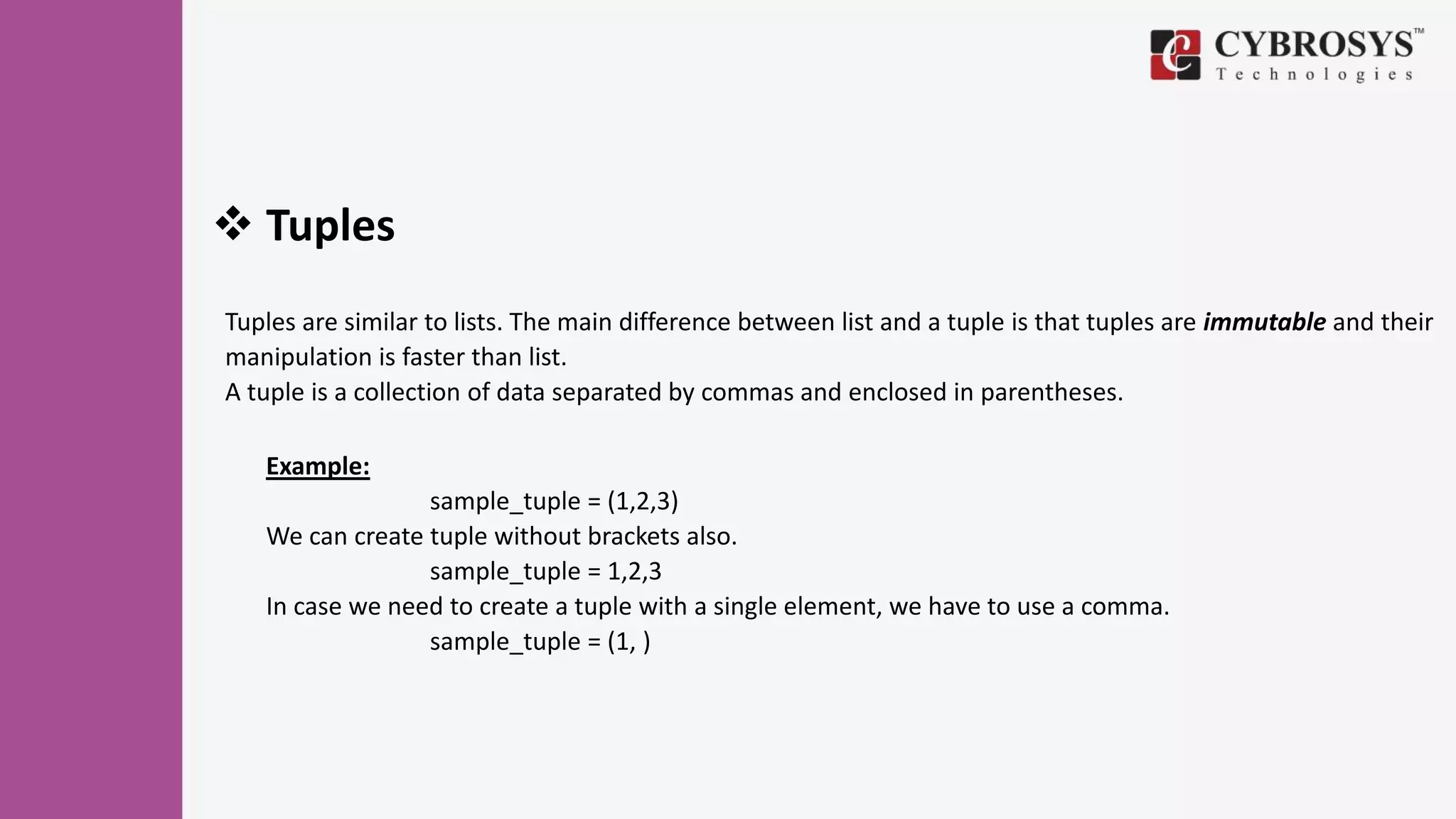
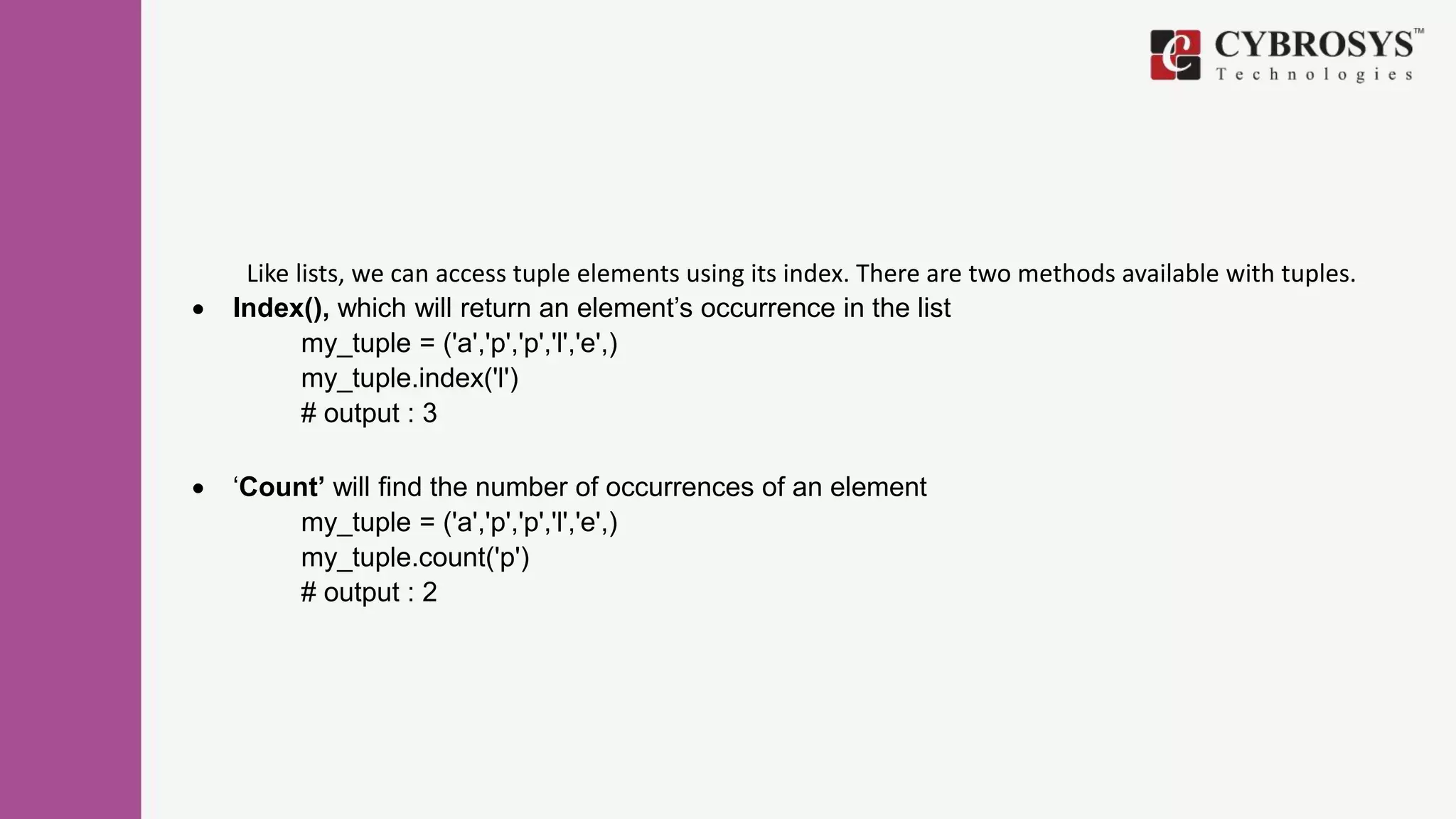
![ Dictionary
A dictionary contains a sequence of key-value pairs. We can access keys and values of a dictionary
independently. Dictionary elements are enclosed by curly brackets.
d = {‘key1’: ‘first’, ‘key2’: [6, 7] }
d.keys() will list all the keys and d.values() will list all the values of the dictionary.
In addition to keys and values methods, there is also
items() method which returns a list of items in the form (key, value). The items are not returned in any
particular order.](https://image.slidesharecdn.com/basicdatastructuresinpython-171107114320/75/Basic-data-structures-in-python-11-2048.jpg)
![ In order to get the value corresponding to a specific key, use get or pop.
d.get(‘key1’) will return the value with key ‘key1’ if there is any. In above example, the output will be ‘first’
d.pop(‘key1’) will remove the pair with key ‘key1’ from the dictionary.
popitem() removes and returns an arbitrary (key, value) pair from the dictionary;
We can use del statement to remove a single element from a dictionary using its key
del d[‘key1’]
clear() will remove all the values from a dictionary.
d.clear()](https://image.slidesharecdn.com/basicdatastructuresinpython-171107114320/75/Basic-data-structures-in-python-12-2048.jpg)
